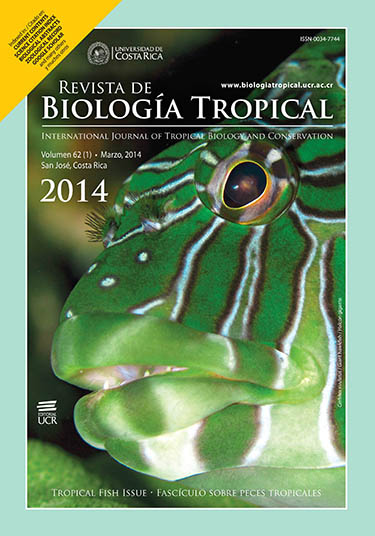Resumen
Pleurodema guayapae es una especie que habita en zonas semidesérticas y salinas del área central de Argentina. Los conocimientos actuales sobre la biología reproductiva de esta especie son muy pobres, por lo que nuestro objetivo fue contribuir a su conocimiento con la descripción de algunos aspectos reproductivos importantes. Para ello se realizaron tres campañas de muestreo durante los veranos (2006-2007, 2007-2008 y 2008-2009) en el área de Chamical-Patquía, provincia de La Rioja, donde se encontraron poblaciones reproductivamente activas. Se observaron y describieron los sitios reproductivos, tipo de puesta, proceso de construcción del nido de espuma, tamaño de la puesta y de los huevos, número de huevos por puesta y tiempo y estado de eclosión de la larva. Las observaciones de comportamiento se realizaron desde el momento en que los machos comenzaron a emitir los cantos hasta que la pareja en amplexo terminó de construir el nido de espuma con los huevos en su interior. Además, se observó y filmó una pareja en amplexo, en el proceso de construcción del nido de espuma y se recolectaron cuatro parejas en amplexo y se colocaron separadamente en recipientes plásticos para que sus puestas pudieran ser observadas en el laboratorio. El tiempo de eclosión se determinó en tres nidos de espuma de edad conocida. Se encontró que las poblaciones de P. guayapae solo estuvieron acústicamente activas luego de una lluvia torrencial. Los sitios de reproducción fueron charcas efímeras de agua de lluvia. Los machos emitieron sus cantos de advertencia desde adentro o fuera de esas charcas. Se realizó una descripción detallada del proceso de construcción del nido de espuma por parte de la hembra y el macho de P. guayapae. El tipo de la puesta en esta especie es un nido de espuma flotante con forma de domo de 6 a 9cm de diámetro y de 1 a 3cm de alto, algunos de los cuales estaban unidos entre sí formando puestas comunales. Los nidos de espuma poseen en promedio 1 137 huevos pigmentados. Esta especie mostró un tiempo de eclosión corto. Nuestros resultados nos permiten concluir que P. guayapae debe ser considerada como reproductor explosivo extremo. Nuestros resultados son discutidos con los obtenidos en otras especies afines.






